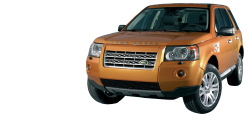
|
|
| Home · FAQ · New Posts · My Posts · PMs · Search · Members · Members Map · Calendar · Profile · Donate · Register · Log In |
 | Home > Technical > Diesel throttle body - what else does it do? |
 
|
|
|
| Steve D Member Since: 19 Jan 2013 Location: Essexshire Posts: 4109 
|
A quick Google threw up this:
|
||
|
| Simon J Member Since: 27 Jul 2019 Location: Norn Iron Posts: 719 
|
Many thanks for the speedy reply and perhaps I should have said my query was about the Diesel engine. Are these explanations not for a petrol engine? As I understand it, the throttle flap/butterfly on a diesel is either open or shut as the airflow is largely irrelevant in a diesel as it’s the fuel flow alone that determines revs and power.
|
||
|
| BossBob Member Since: 30 Sep 2010 Location: Bristol Posts: 1518  
|
The throttle valve on our Diesel engines is there to stop run on and in extreme cases, a run away engine that won’t stop as it is using oil for fuel, has air from intake and turbo and combustion takes place due to compression rather than ignition electrically as in a petrol engine. We’ve got sensors to monitor the position of the butterfly valve and a motor to drive it to the required position. |
||
|
| Simon J Member Since: 27 Jul 2019 Location: Norn Iron Posts: 719 
|
Thanks, but surely if the sole purpose of the butterfly valve is to stop the engine running on by cutting off the air supply, this could be done simply by a solenoid linked to the stop button? Hit the stop button, close the valve, engine stops. So why the need for a sensor and the complex wiring? |
||
|
| BossBob Member Since: 30 Sep 2010 Location: Bristol Posts: 1518  
|
It’s all very well having a simple butterfly valve (compared to the Venturi slide and needle in basic carburettors), but the ecu doesn’t know where the valve is without the sensor. A motor drives the valve to the required position and the ecu knows that the valve is in that position so stops driving the valve. Open or closed, it’s a feedback loop. |
||
|
| Simon J Member Since: 27 Jul 2019 Location: Norn Iron Posts: 719 
|
But why does the ECU need to know where the valve is? It doesn’t control airflow like a petrol, spark ignition engine. It only needs to be open when the engine is running, and closed to make the engine stop. So what purpose is served by intermediate positions? I’ve read that the engine will run perfectly well without the throttle body but it won’t stop as well. |
||
|
| dondiddy Member Since: 16 Apr 2017 Location: Hamilton Posts: 753  
|
The throttle body works in conjunction with the egr system. The ecu can alter the flap position under light engine loads to restrict airflow thus forcing more exhaust gases into the engine to be reburnt thus reducing emissions , it is not a simple on and off system and as also stated it helps the engine shut down smoothly. Years ago cars used to have anti run on valves fitted and these were very hit and miss as the engines used to shudder to a stop. |
||
|
| Simon J Member Since: 27 Jul 2019 Location: Norn Iron Posts: 719 
|
Thanks for this. New to diesels, I’m slowly starting to get the hang of things. |
||
|
| arcturus28 Member Since: 22 Nov 2018 Location: West Midlands Posts: 22 
|
In addition to the above, I can say with certainty that if the throttle body on a FL2 fails/malfunctions, then it *can* cause hell with the car's electrics.
|
||
|
 
|
|
| All times are GMT + 1 Hour |
< Previous Topic | Next Topic > |
Posting Rules
|
Site Copyright © 2006-2025 Futuranet Ltd & Martin Lewis
![]()

